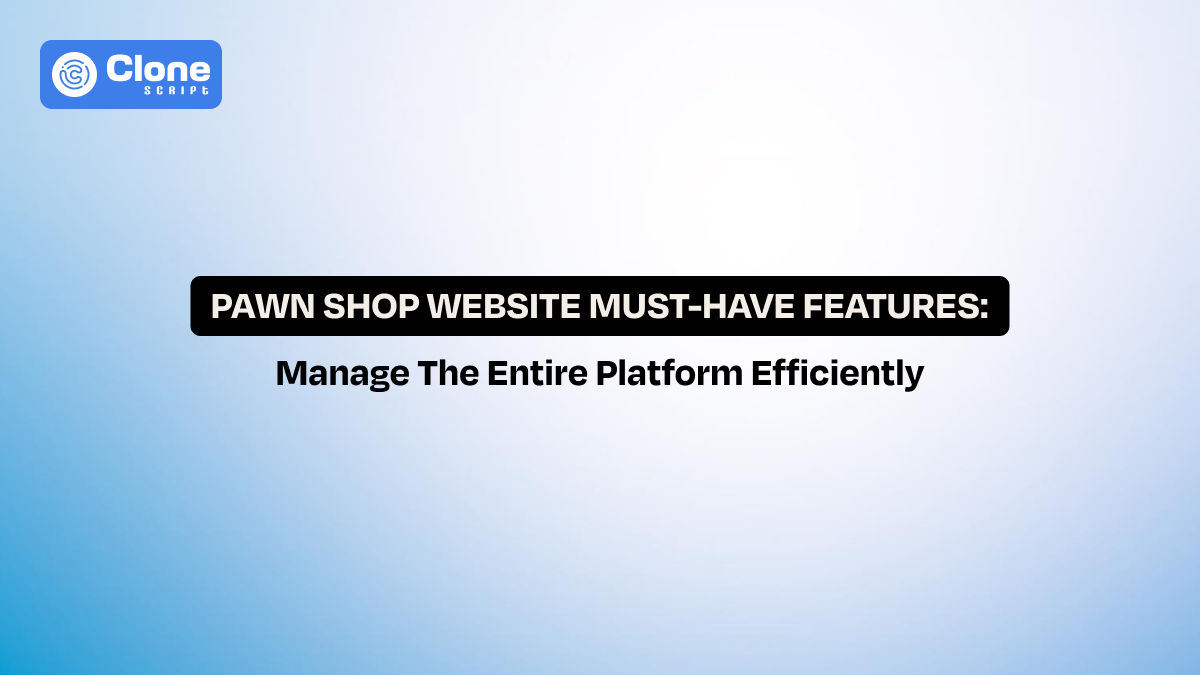10 Proven Content Writing Tips to Increase Your Website Traffic
In the digital world, simply having a website isn’t enough. Your content needs to attract readers, keep them engaged, and turn them into loyal visitors. But how do you achieve this? The answer lies in effective content writing strategies designed specifically to increase organic website traffic.
In this blog, we’ll explore 10 proven content writing tips that not only boost your website visitors but also enhance your search engine visibility. Let’s find out how website content writing drives traffic and conversions.
Tip 1. Write for Your Ideal Reader
The first step in creating content that drives traffic is understanding your audience. Writers make the mistake of creating content they think is valuable rather than what readers actually need.
Knowing your audience means every sentence resonates and adds value.
Ask yourself, deciding for the reader:
-
Who is my target audience?
-
What problems are they trying to solve?
-
What type of content resonates with them?
By addressing your audience’s pain points and providing actionable solutions, you make your content engaging. Personalization encourages readers to stay longer, explore other pages, and return for more.
Tip: Use a conversational tone. Think of your content as a friendly guide rather than a formal lecture. Incorporate relatable examples and mirror your readers’ language to build connection and trust.
Extra Insight: Creating audience personas, a detailed profile of your ideal reader. It can help you write content that consistently meets their needs and drives engagement.
Tip 2. Use Headings That Include Long-Tail Keywords
Headings are more than structural markers. They are powerful SEO tools. Incorporating long-tail keywords in your headings helps Google understand your content and makes it easier for readers to scan.
For example, instead of a generic heading like:
“How to Improve Your E-commerce Site Ranking”
Use a targeted, keyword-rich heading:
“How to Write E-commerce Website Content That Drives Potential Organic Traffic”
This approach naturally integrates your keywords, improves readability, and aligns with content writing tips to increase website visitors. Clear, descriptive headings guide readers through your article and make it easier to find the information they need.
How to Brainstorm Long-Tail Headings:
-
Start with your main topic keyword (e.g., E-commerce content writing).
-
Think about what specific questions your readers might ask (e.g., how to optimize e-commerce website content for traffic).
-
Combine the keyword with actionable phrases: “tips,” “guide,” “steps,” or “strategies.”
-
Test variations in Google Autocomplete or AnswerThePublic to see what real users are searching for.
Pro Tip: Use H1 for your main title, H2 for primary subtopics, and H3 for secondary points. A consistent heading hierarchy improves both user experience and SEO performance.
Tip 3. Keyword Research with Low-Competition, High-Intent Phrases
Keyword research is an ideal aspect for effective content writing for traffic. Focusing on low-competition, high-intent keywords increases your chances of ranking faster. It helps to attract qualified visitors who are more likely to engage or convert.
Here is the overview of how low difficulty-scored keywords work:
-
Low-competition keywords: These types of keywords are easier to rank for and usually very specific, having a low search volume. Targeting these phrases helps smaller websites compete effectively against larger, established sites.
-
High-intent keywords: These keywords indicate that the searcher is ready to take action, such as subscribing, downloading a resource, or purchasing a service.
Tools to Use: Finding Low-competition Keywords with High-intent
These tools are very useful to find relevant phrases that keep your site in front of potential users. Some of them are free, and others are available with freemium and premium plans:
-
Google Keyword Planner – This is a free tool offered by Google for discovering search volumes and competition levels.
-
Ahrefs & SEMrush – These tools come with a freemium and premium basis for identifying low-competition keywords and analyzing competitors.
-
Google Autocomplete & Related Searches – The easiest way to find real-world search queries and user intent.
Pro Tip: Always prioritize relevance over volume. A smaller, highly-targeted audience converts better than broad traffic and builds more meaningful engagement over time.
Extra Insight: Consider grouping keywords by intent: informational, navigational, or transactional. This helps you structure content that serves the reader at every stage of the journey while improving SEO performance.
Tip 4. Create In-Depth, Valuable Content
Short, superficial articles rarely rank high anymore. Google’s 2025 algorithm update favors content that is comprehensive, well-researched, and genuinely helpful. SEOs notice that thin content is never acceptable on the search engines because it does not have value for users.
In-depth content on the other side not only improves your SEO rank but also establishes your authority and keeps readers engaged.
When creating in-depth content, focus on:
-
Covering all aspects of a topic: Don’t leave questions unanswered. Think about the topic from a beginner’s perspective as well as an advanced reader’s.
-
Using data, examples, and actionable steps: Back up your points with statistics, case studies, or real-life examples. Provide step-by-step instructions when possible.
-
Answering audience questions: Address the queries and concerns your readers are likely to have. FAQs or sub-sections are helpful here.
Example:
If writing about business growth strategies, include tips on:
-
Market analysis and identifying opportunities
-
Effective team management and delegation
-
Enhancing customer experience and retention
-
Leveraging digital marketing and online sales channels
Extra Tip: Use visuals like charts, infographics, or screenshots to make complex information easier to digest. Well-structured, rich content encourages users to spend more time on your page, increases shares, and naturally attracts backlinks important for organic traffic growth.
Tip 5. Add Storytelling to Make Content Relatable
Facts inform, but stories engage. Adding storytelling elements makes your content memorable, relatable, and emotionally compelling. Readers are more likely to return to a website that feels personal rather than robotic.
Ways to Incorporate Storytelling:
-
Share personal experiences or case studies: Show real-world examples of challenges and solutions.
-
Use anecdotes to explain complex topics: Break down technical or abstract concepts through relatable scenarios.
-
Connect emotionally with your readers: Highlight struggles, successes, or lessons learned that your audience can identify with.
This approach transforms your content from a static list into an engaging story, keeping readers invested and encouraging them to explore more of your website.
Tip 6. Natural Keyword Placement
Keyword stuffing is outdated and can hurt both readability and SEO. Instead, focus on natural keyword placement, where keywords are integrated seamlessly into your content. This helps search engines understand your topic while keeping your content engaging for readers.
Best Practices for Natural Keyword Placement:
-
Place primary keywords early: Include your main keyword in the first 100 words of your content.
-
Use keywords in headings and subheadings: This adds relevance without disrupting flow.
-
Incorporate variations and synonyms: Avoid repetition and make content sound natural.
-
Add keywords to meta descriptions and image alt text: This improves visibility in search results and image searches.
Pro Tip: Aim for readability first. Your keywords should feel like a natural part of the conversation, not forced into every sentence. This aligns with best content writing practices for conversions and makes your content resonate with both readers and search engines.
Tip 7. Leverage FAQs and Q&A Sections
Adding FAQs and Q&A sections to your content serves two important purposes: improving SEO and enhancing user experience. These sections help your content appear in Google’s rich snippets and provide quick answers to your readers’ most pressing questions.
How to Use FAQs Effectively:
-
Identify common questions: Use tools like Google’s “People Also Ask,” AnswerThePublic, or customer feedback to find real queries.
-
Provide concise, clear answers: Each response should be informative and easy to scan.
-
Include keywords naturally: Integrate your main and long-tail keywords without forcing them.
-
Update regularly: Refresh FAQs as trends, products, or services evolve to maintain relevance.
Pro Tip: Position FAQs at the end of your article or within relevant subtopics. This helps users find answers quickly and encourages them to explore more pages on your website, increasing engagement and reducing bounce rate.
Tip 8. Internal Linking to Related Services
Internal linking not only guides readers to related pages but also strengthens your website’s SEO structure. Proper internal links help search engines understand your site hierarchy and distribute link authority across pages, improving overall ranking potential.
Best Practices for Internal Linking:
-
Link to relevant content: Include blog posts, service pages, or guides that provide additional value.
-
Use descriptive anchor text: Instead of generic phrases like “click here,” use keyword-rich text like “Buy Now Printed T-shirt at 10% Off.”
-
Strategically place links: Position them where readers naturally need more information or context.
-
Maintain a reasonable number of links: One to three relevant links per page is usually sufficient to avoid overwhelming readers.
Pro Tip: Internal linking not only improves SEO but also keeps users engaged, increases time on site, and encourages exploration of other pages. This enhances both traffic and conversions.
Tip 9. Use Autocomplete & Related Searches for Keyword Ideas
Google Autocomplete and Related Searches are excellent tools for discovering real-world search behavior and generating content ideas. They reveal what your audience is actively looking for, helping you create content that is both relevant and likely to attract traffic.
How to Use Them Effectively:
-
Start typing your main keyword in Google: Observe the suggested phrases that appear in the dropdown. These are popular searches that can inspire headings, subtopics, or FAQs.
-
Check the bottom of search results: The “related searches” section provides additional keyword variations and long-tail phrases.
-
Incorporate suggestions naturally: Use these keywords and phrases in your headings, subheadings, or body text without forcing them.
Pro Tip: Regularly review autocomplete and related searches to keep your content fresh and aligned with evolving user intent. This approach helps you identify new opportunities, uncover gaps in existing content, and maintain high relevance for your audience.
Tip 10. Monitor Performance & Refine Keywords
Content writing is not a one-and-done task. To maintain and grow your website traffic, it’s essential to regularly monitor performance and refine your keyword strategy.
How to Monitor and Optimize Content:
-
Use analytics tools: Platforms like Google Analytics and Google Search Console help track traffic, user behavior, and keyword performance.
-
Identify top-performing keywords: Determine which phrases are driving the most traffic and conversions, and optimize related content around them.
-
Track engagement metrics: Monitor bounce rate, session duration, and pages per session to see how users interact with your content.
-
Update content proactively: Refresh outdated information, add new keywords, improve readability, and adjust headings or meta descriptions as needed.
Pro Tip: Even small tweaks, like updating statistics, improving meta descriptions, or adding internal links, can significantly boost traffic and engagement over time. Continuous optimization makes your content stay relevant, authoritative, and effective in driving traffic.
Case Study of Implementing These Content Writing Tips
Imagine you run a small business selling eco-friendly home products. Here’s how you can apply all 10 steps to create traffic-driving content:
-
Understand your ideal reader: Young homeowners who care about sustainability but aren’t experts. Use a friendly, conversational tone and address their pain points with actionable advice.
-
Craft SEO-friendly headings: Use long-tail keywords, e.g., “Affordable Eco-Friendly Kitchen Products for Beginners”, to guide readers and improve search rankings.
-
Conduct keyword research: Focus on low-competition, high-intent phrases like “best reusable kitchen items” or “eco-friendly cleaning products for small apartments.”
-
Create in-depth content: Cover product choices, daily-use tips, and cost-saving strategies to provide real value.
-
Incorporate storytelling: Share relatable examples, such as a family reducing plastic waste with reusable products.
-
Place keywords naturally: Integrate them seamlessly into sentences, headings, and subheadings.
-
Leverage FAQs: Answer common questions like “Are sustainable products expensive?” to improve engagement and search visibility.
-
Use internal linking: Link to related blog posts and product pages to keep readers exploring your site.
-
Explore autocomplete and related searches: Find trending keyword ideas and incorporate them naturally.
-
Monitor and refine content: Track performance via analytics, update keywords, and refresh content regularly.
By following these steps, your blog becomes more than just a page online. It attracts the right readers, keeps them engaged, and builds trust. Visitors are more likely to explore your products, share your content, and return for future tips, turning your content into a powerful, traffic-generating asset.
Conclusion
Driving website traffic requires more than posting content. It demands strategy, value, and audience focus. By writing for your ideal reader, using long-tail keywords, and producing in-depth, actionable content, you attract qualified visitors. Incorporating storytelling, natural keyword placement, FAQs, and internal linking enhances SEO and engagement.
Using tools like Google Autocomplete, Related Searches, and analytics helps align content with real-time search trends. Continuously refining keywords, updating insights, and improving readability ensures relevance. Focus on creating content that not only draws traffic but also engages, converts, and encourages repeat visits for long-term growth.
FAQs
-
How can I increase website traffic through content writing in 2025?
Focus on creating high-quality, in-depth content that addresses your audience's needs. Incorporate long-tail keywords naturally, utilize internal linking, and optimize for user experience (UX) to enhance engagement and SEO performance.
-
What role does storytelling play in SEO content?
Storytelling makes content more engaging and relatable, which can reduce bounce rates and increase time on site. These are both positive signals for SEO.
-
What is E-E-A-T, and why is it important in content writing?
E-E-A-T stands for Experience, Expertise, Authoritativeness, and Trustworthiness. Google uses these factors to assess the quality of content, making them important for SEO success.
-
How do I optimize content for Google's AI-driven search in 2025?
Structure your content clearly with semantic SEO, use descriptive headings, and keep your site technically optimized for AI crawlers.
-
Is video content important for SEO in 2025?
Yes, integrating video content can increase organic traffic and improve user engagement, which are beneficial for SEO rankings.
-
How often should I update my content for SEO?
Regularly update your content to keep it relevant and accurate, ideally with a 6-8 month cycle. This practice helps maintain and improve your search engine rankings.
-
Is it beneficial to repurpose content across platforms?
Yes, sharing your content on platforms like Medium can expand your reach and drive traffic back to your website.
 BTC - Bitcoin
BTC - Bitcoin
 USDTERC20 - USDT ERC20
USDTERC20 - USDT ERC20
 ETH - Ethereum
ETH - Ethereum
 BNB - Binance
BNB - Binance
 BCH - Bitcoin Cash
BCH - Bitcoin Cash
 DOGE - Dogecoin
DOGE - Dogecoin
 TRX - TRON
TRX - TRON
 USDTTRC20 - USD TRC20
USDTTRC20 - USD TRC20
 LTC - LiteCoin
LTC - LiteCoin







